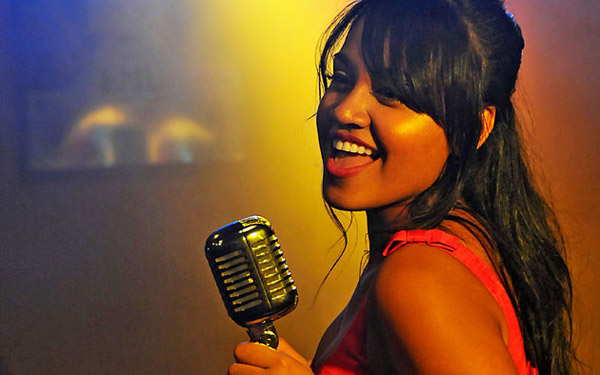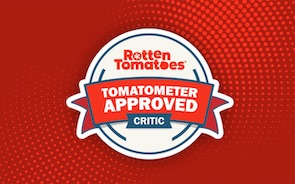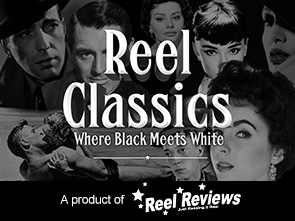![]()

|
Based on a popular Aboriginal stage musical, The Aussie film Bran Nue Dae is a fun and breezy coming-of-age road picture set in Australia’s barren west coast. It features some great original ideas and a bunch of catchy song and dance numbers sure to delight audiences of all ages. And even though it doesn’t always hit on all cylinders (in fact it misses badly with some), there’s enough good stuff going on to keep a smile on our faces for a brief 85 minutes.
It’s the summer of 1969. Shy Aboriginal schoolboy Willie (Rockie McKenzie) is agonizing over young Rosie (Jessica Mauboy), the girl he loves without being able to muster the pluck to tell her so. He runs away from the repressive boarding school headed by paddle-toting Father Benedictus (Geoffrey Rush) to be with Rosie before she becomes too involved with a local rock singer (Dan Sultan).
Along the way, Willie meets up with boozy hobo Uncle Tadpole (Ernie Dingo), who promises to get Willie back home to his native Broome, and later a quirky hippie couple (Missy Higgins and Tom Budge) who give them a ride in their fried-out kombi.
Meanwhile Father Benedictus has hit the road in his Mercedes, hot on their trail, determined to retrieve Willie and put him back on the course of priesthood as his mother wishes.
It feels a bit discourteous to pick too many nits with this happy-go-lucky romp through the Australian Outback since there’s certainly nothing wrong with filmmakers just having fun with a movie. But sorely missing from the proceedings is a sense of dramatic tension or something that threatens to disrupt the narrative’s light-hearted flow… perhaps a true villain or some kind of evil spiritual force for instance. Geoffrey Rush’s Father Benedictus character touches on a sense of foreboding early on as his iron-fisted rule of the boarding school almost takes on the eerie gloom of the dingy workhouse in 1968’s Oliver! But as Father Benedictus sets out on the trail to catch up with Willie, he’s relegated to cartoon character significance in a few silly flashes that are never quite funny or clever enough to be pull off the intended effect.
Director Rachel Perkins and writer Reg Cribb just miss on a couple of other opportunities to inject the story with a much needed change of pace when they pull back on the reigns when they should have pushed to a full gallop. One scene comes tantalizingly close as Willie hops aboard a flatbed truck loaded with football players that perform an almost unearthly Zorba dance covered in white paint and clad in native garb. And yet another aboriginal dance sequence that comes as Willie’s dream teases but doesn’t quite fulfill. Both scenes are eerily intoxicating to watch. The film could have used more.
One of Bran Nue Dae’s brightest elements, besides the rousing musical numbers, is the performance of Dingo who steals nearly every scene as the whiskey-swilling Uncle Tadpole. Dingo was in the original stage production and remained mostly out of acting until the chance to reprise his role came along. Tadpole is clearly running from his problems, but his meeting with Willie forces him to confront his demons and get his act together. Like the blind leading the blind, we know that Willie and Tadpole will eventually reach their destinies together. And we eventually discover they have a lot more in common than they could have ever imagined.
As charming as Bran Nue Dae is, and as difficult as it is to dislike, it’s also never quite able to reach greatness due to its lack of restraint and self-control. Perkins is never able to seamlessly stitch all its moving parts together, and as a result it often feels a bit disjointed and herky-jerky… unattached pieces and wacky characters flailing about looking for direction. But not to worry. The film is meant to be a fun-loving slapstick musical comedy that’s not afraid to laugh at itself. And as that, the film works in spades. Only the fuddy-duddies in the audience won’t find themselves tapping their feet in the aisles and singing aloud about how “there’s nothing more I’d rather be than to be an aborigine and watch you take my precious land away.”





























